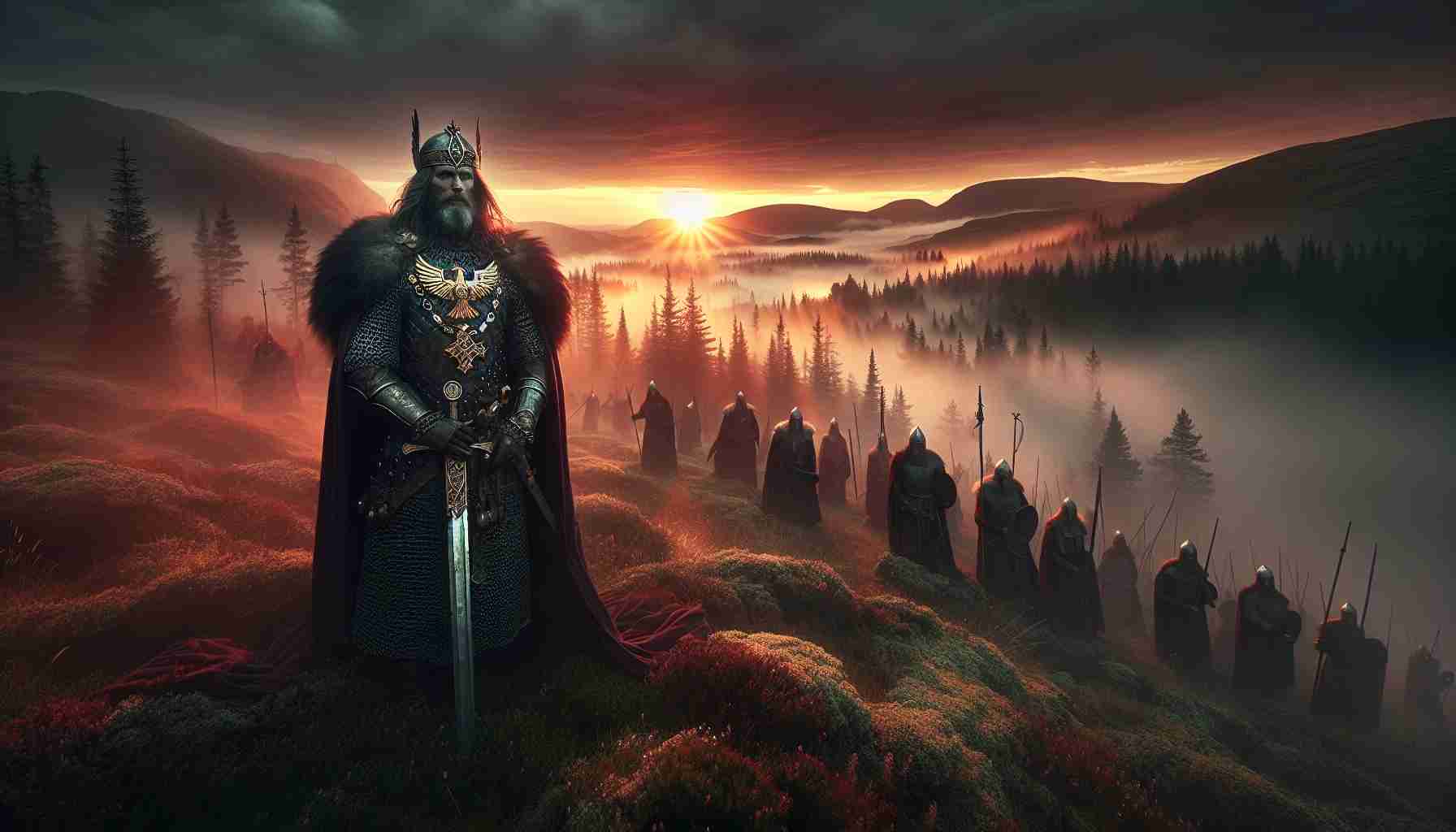

The sun bled over the eastern hills of Stiklestad, turning the dew to rubies. Beneath the haze of dawn, war horns thundered, their mournful cry rolling over broken stone cairns and pine-dark ridges. King Olaf Haraldsson stood at the heart of his shield wall, sword in hand, cloak snapping in the wind. The iron eagle of Norway gleamed on his breastplate, but it was another symbol—hidden beneath the mail, resting close to his heart—that spurred him that day: the crucifix gifted to him by Bishop Grimketel, blessed by English monks and engraved with a single verse in Latin: “So I strive to preach the Gospel, not where Christ was already named” (Romans 15:20).
He had once sailed those coasts not as a preacher, but as a wolf among sheep—a Viking, feared even by his brothers. But the fire of the Gospel had tamed the rage of his youth. Baptized in Rouen, tutored by Saxon missionaries, Olaf returned to Norway not with sword alone, but with Scripture, seeking to drag a wild kingdom into the light of Christ.
Yet darkness clung to the fjords like fog.
The farmers of Trøndelag lined the ridges now, axes glowing in dawnlight, oath-sworn to the old gods. They had rallied behind the exiled noble Kalv Arnesson and the Danish puppet king, Cnut’s son Svein. They told whispers of Olaf's harsh laws and burned churches. They grieved for shrines to Thor and Odin now razed, for Gods cast out by a single man’s zeal. Olaf had hoped to build Christ’s kingdom. But this battlefield would be its crucible.
A hush fell as Olaf stepped forward, eyes sweeping the rift between lines. His standard—woven with golden serpents and crosses—caught the wind. He called out, voice stern as northern ice.
“I was once a breaker of oaths,” he said. “Now I keep one—made not to kings, but to Christ. Let them come. Let them break me. The Gospel cannot be unmade.”
The earth shook as the charge came like a flood tide. Axes and swords screamed through air. Olaf fought beside his men, a grim figure clad in battle-saint’s resolve. Three times he was struck—first in the knee, then his mailed chest. A final spear plunged through his side. He fell to his knees.
The shield wall broke around him, but no blood poured from Olaf’s wound—only silence. His lips moved one last time.
“God forgive them…”
The battle waned with dusk; Olaf’s blood watered the soil of his homeland. Word of his death passed like wildfire. At first, the enemy mocked. But as weeks passed, strange whispers rose. Farmers swore that blind men wept at his burial mound and rose healed. Fields near his cairn yielded double harvests. The earth where he fell was said to glow at moonrise.
The bishops—those he had once summoned from England—came north, led by Grimketel. They exhumed his body from beneath the cairn at Nidaros. It was said the king’s flesh was uncorrupted, his hair still bright like flame. The crucifix pressed to his ribs shone as though just forged.
They crowned him not with iron, but with sainthood.
From that day, Nidaros—later Trondheim—grew into holy ground. Under torchlit arches of a grand cathedral raised over his bones, pilgrims from across Christendom came to kneel. Knights limped on shattered legs to his shrine. Monks from Lindisfarne whispered litanies as they touched the stone urn that bore his remains.
But it was not miracles alone that changed Norway. It was the seed sown by Olaf—that a man of violence might be remade in holy fire. His laws returned, but tempered by mercy. Pagan rites faded not with persecution, but with time, supplanted by songs of Christ rising from fjord and valley.
Still, the saints of stone atop the cathedral’s western wall seem to lean inward, as though listening. For among historians, debates still stir like winter wind: Had Olaf converted too soon? Ruled too harshly? Was his sainthood forged by Church politics, or true miracles? The questions rise and fade. But the land remembers. So do the streams that run past Stiklestad, red once with blood, now silver with snowmelt.
At Nidaros, carved above the chancel, burns a single word in Old Norse: Kristinn konungr—Christ’s king.
Today, that iron crucifix lies preserved in the cathedral, worn by centuries. Tourists come with cameras, believers with tears. Yet within the hush of Gothic stone, it’s easy to imagine the clang of blade, the crackle of banners, the king who fell not for conquest, but conversion.
A Viking died for Christ that day. And a wild land—lost in tide and tempest—began to believe.